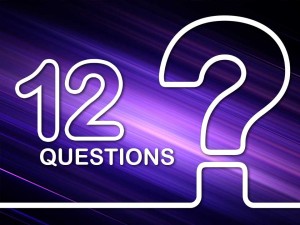Here, in roughly chronological order, are 12 basic questions you should ask yourself as you prepare for your next presentation. Some of these deal with visuals — how you might prepare and deliver PowerPoint or Keynote — but most of them are all encompassing and are relevant to just about every situation where you are formally addressing a group.
1. Who are these guys? The most basic of research should be conducted into your audience. Who are they? What are the general parameters that define them: age, education, gender, socioeconomics, careers, company positions, etc., etc. How homogeneous are they? What about the organization they belong to? What are their concerns, needs, trends? Try to crawl inside their heads. If you have time, contact some of their leaders and rank and file members to interview them. Then you can ask yourself the ultimate question: What do I have of value that I can bring to this specific audience?
2. What is my BIG idea? I have written about having and developing a big idea a number of times. What do you want the audience to “get?” What one thing do you want them to remember if you run into any of them in a few weeks? Express it as a benefit or action item for them. Distill this down to one clear, simply-stated concept. Use this BIG idea as a yard stick to measure against everything in your presentation. Does every slide, comment, exercise, etc. move the audience toward this one concept. Maybe 90% of business leaders and experts who speak have too much information to effectively deliver to an audience. It is better that your listeners get your one core concept then they are overwhelmed with 10.
3. Is there a logical structure? Now that you have a BIG idea, do you have maybe three supporting points for that idea? Do you state and develop those points clearly, logically? Does it all make sense? Does it flow logically? Many experts make the mistake of structuring their presentations according to their own internal understanding of their content. Organize and parse it so that your audience, who may not be experts, can absorb and digest. Put yourself in their shoes.
4. Do I really need slides? I make my living designing visual presentations for speakers but there are many situations where even a non-professional speaker can and should go it alone. Slides can help define a concept, can set a mood, can add an emotional component and can even help a speaker keep on track, but the audience wants to see and hear you. They want to know your take, your opinions. Consider just standing and delivering. If you are prepared and confident enough, it can be a powerful experience for both you and your audience.
5. Are my slides effective? This can cover so much, but ask yourself: Do I use quality images? Have I removed all but the most important keywords from my slides? If I have numbers, do I make them meaningful to my audience? Evaluate each slide to see if it works to move your viewers toward your BIG idea. Ask yourself if you need every slide and every element in each slide? Do you need additional slides to make your case?
6. Do I have stories? The power of relevant stories cannot be overstated. They appeal directly to our listeners’ empathy and emotions. The audience will paint their personal experiences onto yours. The connection and the buy-in are enormous. However stories need to be developed, edited and rehearsed. Don’t waste a lot of time with extraneous details. Make sure there is a relevant point (see #2 above). Tell about challenges as well as successes — people love to hear how you overcame a difficulty. If you are anxious about stories being too soft for a business context — don’t be. But if you must, think of them as “examples.”
Next week: the remaining 6 questions, including what to do just before you go on (Hint: Move like Jagger).
